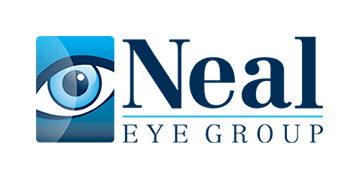We have already talked about presbyopia – the natural aging process that occurs sometime in your 40s that results in blurry vision while looking at closer objects. Some of the most common ways to manage presbyopia include bifocal glasses or reading glasses. But luckily, for those who do not want to rely on glasses for clear vision, there are several options of contact lenses that can help to correct for distance and near vision during presbyopia such as monovision and multifocal contact lenses. If you have worn lenses your whole life, you may be interested in learning more about these options as you enter your 40s. Continue reading to learn more about options of contact lenses for presbyopia.
Monovision Contacts
Monovision is the traditional approach for contact lenses in presbyopia. In a monovision contact lens fit, one eye is used for distance viewing and the other eye is used for near viewing. The dominant eye is corrected with the distance prescription; the brain will learn to rely on the dominant eye for viewing objects far away. The other eye, the non-dominant eye, will be fit with a contact lens that incorporates a reading prescription, and this will be the eye used for near tasks such as reading or using the phone. Your eye doctor can do a few tests in the office to determine which of your eyes is dominant. For those who do not need any glasses or contact lenses to see well at distance, a monovision fit can entail simply wearing one contact lens in the non-dominant eye to see better up-close.
While monovision may seem like a strange concept, the brain easily adapts to this form of correction and it typically provides good vision at both distance and near. There are some drawbacks; monovision will impact depth perception, and some people who use these contact lenses notice blurry vision at distance while they are driving, particularly at night. Despite these potential drawbacks, many people find they are happy with their vision in monovision contact lenses.
Multifocal Contact Lenses
Unlike monovision contact lenses, multifocal lenses work more like bifocal glasses where both eyes can be used distance and near vision. Lenses with a multifocal design have complicated optical properties that correct for certain distances based on what portion of the lens the wearer is looking through. These lenses allow wearers to retain their depth perception, and night driving is less of a problem. However, like monovision contacts, multifocal lenses also require an adaption period. If the right multifocal prescription is found, many wearers find they are able to achieve clear vision at a very wide range of distances.
A Range of Options
Both multifocal and monovision options for contact lenses come in a wide range of options, including daily disposable lenses, monthly or biweekly replacement lenses, and extended wear lenses. Those who have an astigmatism are usually still candidates for correction with these types of lenses. If you are sick of relying on your reading glasses or your bifocal in order to read easily, ask your doctor if you are a good candidate for multifocal or monovision contact lenses.

0 Comments